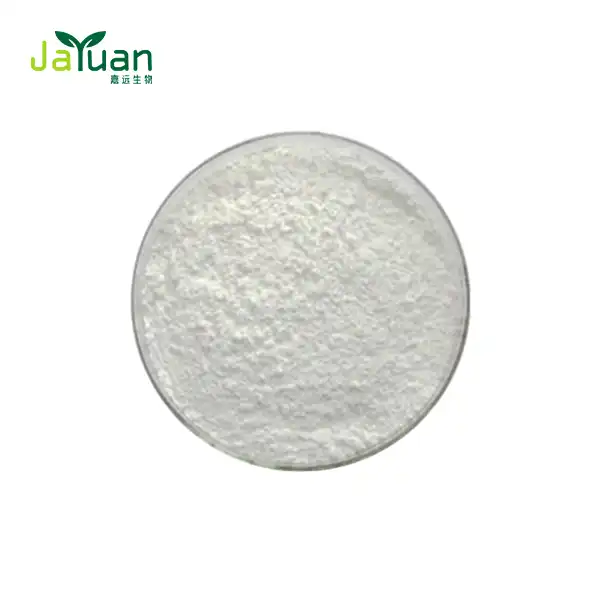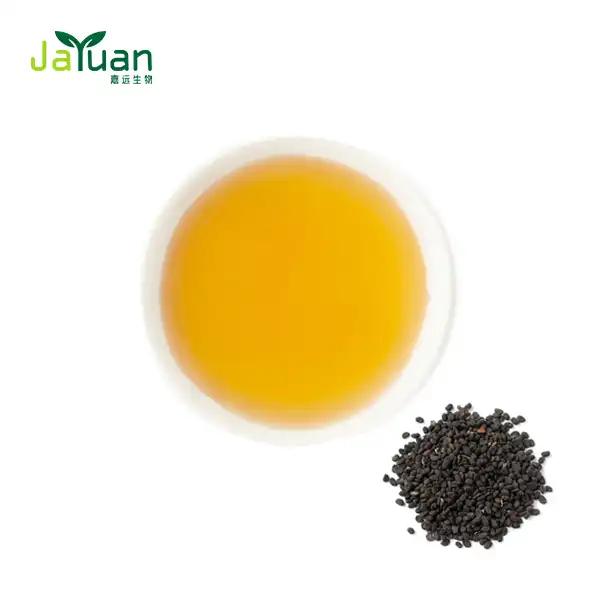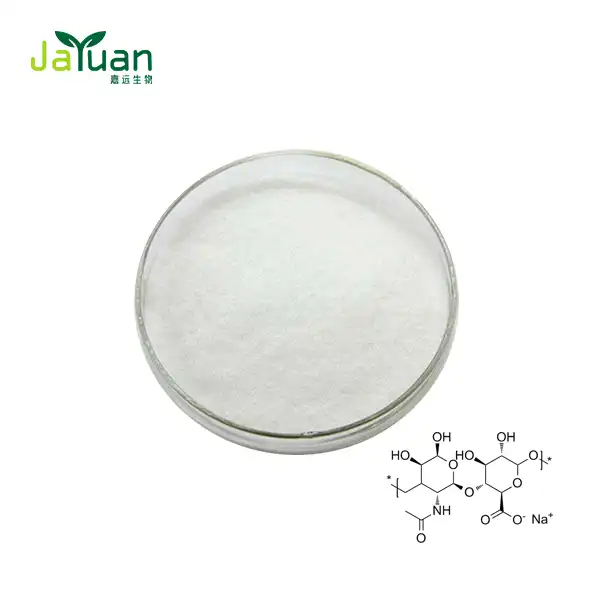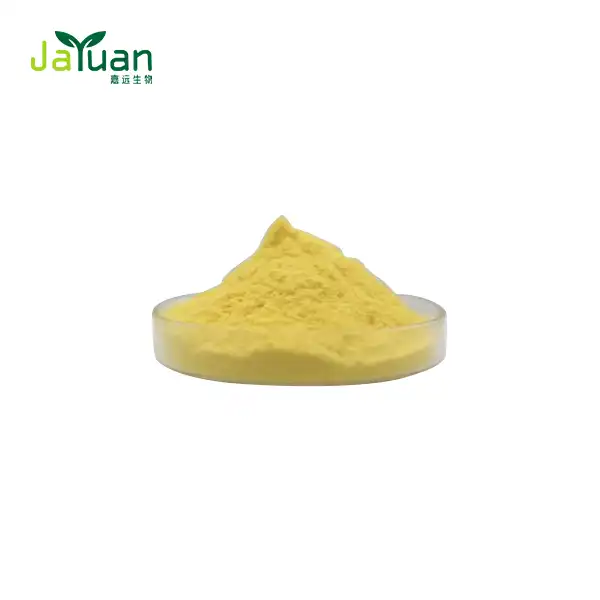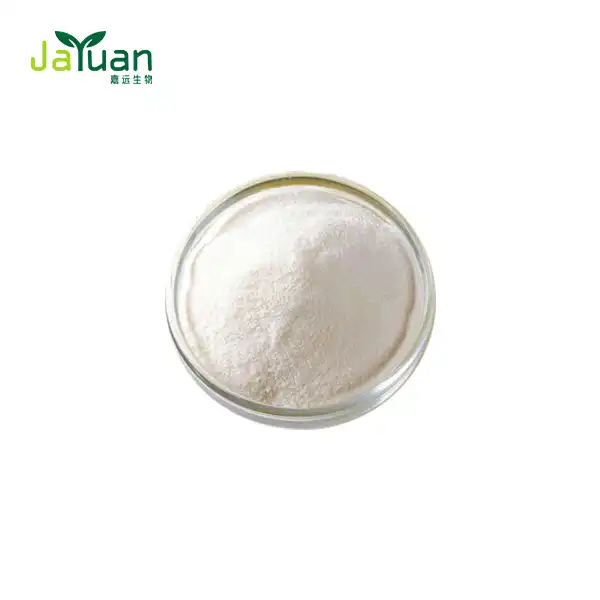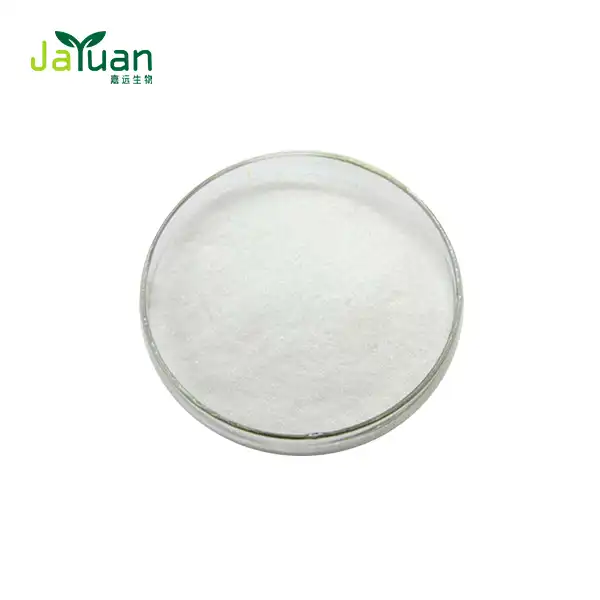What is the difference between Naringin and Naringenin?
Citrus fruits are not just delicious; they're also packed with powerful compounds that can benefit our health. Naringin powder can enhance the absorption of certain nutrients and medications, making it a valuable addition to various health regimens. Two such compounds, naringin and naringenin, have garnered significant attention in recent years due to their potential health benefits. But what exactly sets these two apart? Let's dive into the world of citrus flavonoids and uncover the key differences between naringin and naringenin.

What are the chemical differences between Naringin and Naringenin?
To understand the distinction between naringin and naringenin, we need to delve into their chemical structures. Naringin is a flavanone glycoside, which means it's a compound composed of a flavonoid portion (naringenin) attached to a sugar molecule. Specifically, naringin consists of naringenin linked to a disaccharide (two sugar molecules) called neohesperidose.
On the other hand, naringenin is the aglycone form of naringin. In simpler terms, it's the "core" flavonoid molecule without any attached sugar groups. This structural difference significantly impacts how these compounds are absorbed and metabolized in the body.
The presence of the sugar group in naringin makes it more water-soluble than naringenin. This enhanced solubility affects how easily the compound can be absorbed in the digestive tract. Naringenin, being more lipophilic (fat-loving), can potentially cross cell membranes more easily once it's in the bloodstream.
Another crucial difference lies in their molecular weights. Naringin, with its additional sugar molecules, has a higher molecular weight compared to naringenin. This difference in size can affect how these compounds interact with various biological targets in the body.
How do Naringin and Naringenin affect the body differently?
The structural differences between naringin and naringenin lead to distinct effects on the body. Let's explore some of these differences:
Absorption and Bioavailability: Naringin, due to its sugar component, is not directly absorbed in the small intestine. Instead, it must first be metabolized by gut bacteria, which cleave off the sugar group to produce naringenin. This process occurs in the colon, which means the absorption of naringenin from naringin is delayed and may be less efficient. In contrast, naringenin can be absorbed more readily in the small intestine, potentially leading to higher bioavailability.
Metabolic Effects: Both compounds have been shown to have beneficial effects on metabolism, but they may work through slightly different mechanisms. Naringin has been observed to inhibit certain enzymes involved in carbohydrate metabolism, which could help regulate blood sugar levels. Naringenin, on the other hand, has been found to activate AMPK (AMP-activated protein kinase), an enzyme that plays a crucial role in cellular energy homeostasis.
Antioxidant Activity: While both compounds exhibit antioxidant properties, their effectiveness can differ. Naringenin, being more lipophilic, may be more effective at scavenging lipid-soluble free radicals. Naringin, however, might have a broader spectrum of antioxidant activity due to its ability to chelate metal ions, which can catalyze oxidative reactions.
Anti-inflammatory Effects: Both naringin and naringenin have demonstrated anti-inflammatory properties in various studies. However, the mechanisms by which they exert these effects may differ. Naringin powder has been shown to inhibit the production of pro-inflammatory cytokines, while naringenin appears to modulate inflammatory signaling pathways more directly.
Cardiovascular Effects: Naringin and naringenin both show promise in supporting cardiovascular health, but through slightly different pathways. Naringin has been found to help lower cholesterol levels by inhibiting an enzyme involved in cholesterol synthesis. Naringenin, meanwhile, has been observed to improve endothelial function and reduce oxidative stress in blood vessels.
Interaction with Drug Metabolism: One area where naringin and naringenin differ significantly is in their interaction with drug-metabolizing enzymes. Naringin is known to inhibit certain cytochrome P450 enzymes, particularly CYP3A4, which is involved in the metabolism of many medications. This inhibition can lead to increased blood levels of certain drugs, potentially causing adverse effects. Naringenin, while also capable of interacting with these enzymes, generally does so to a lesser extent.

Is Naringin or Naringenin more effective for antioxidant benefits?
When it comes to antioxidant benefits, both naringin and naringenin have shown promise, but their effectiveness can vary depending on the specific context and measurement method used. Let's break down the antioxidant potential of each compound:
Naringin's Antioxidant Properties:
- Metal Chelation: Naringin has demonstrated the ability to chelate metal ions, particularly iron and copper. This property is significant because these metals can catalyze oxidative reactions that produce harmful free radicals. By binding to these metals, naringin can help prevent such reactions.
- Free Radical Scavenging: Naringin has shown the capacity to neutralize various types of free radicals, including superoxide and hydroxyl radicals. This broad-spectrum activity contributes to its overall antioxidant effect.
- Indirect Antioxidant Effects: Some studies suggest that naringin powder may enhance the body's natural antioxidant defenses by increasing the production of antioxidant enzymes like superoxide dismutase and catalase.
Naringenin's Antioxidant Properties:
- Direct Free Radical Scavenging: Naringenin, like naringin, can directly neutralize free radicals. Its structure, particularly the presence of hydroxyl groups, allows it to donate electrons to stabilize reactive oxygen species.
- Lipid Peroxidation Inhibition: Due to its more lipophilic nature, naringenin may be particularly effective at preventing lipid peroxidation, a process where free radicals damage cell membranes.
- Nrf2 Activation: Some research indicates that naringenin can activate the Nrf2 pathway, a key regulator of cellular antioxidant responses. This activation can lead to increased production of various antioxidant and detoxifying enzymes.
So, which is more effective? The answer isn't straightforward and depends on several factors:
Bioavailability: While naringin might show stronger antioxidant effects in vitro (in test tube studies), its lower bioavailability could limit its effectiveness in the body. Naringenin, being more readily absorbed, might have an advantage in this regard.
Localization: Naringenin's higher lipophilicity might make it more effective in lipid-rich environments, such as cell membranes or the brain, where it could offer protection against lipid peroxidation.
Duration of Effect: Naringin, due to its slower metabolism, might provide a more prolonged antioxidant effect compared to naringenin, which could be metabolized more quickly.
Synergistic Effects: In real-world scenarios, these compounds are often consumed together (such as in citrus fruits or extracts). Some research suggests that the combination of naringin and naringenin might offer synergistic antioxidant benefits that exceed the effects of either compound alone.
It's worth noting that the effectiveness of these compounds can also depend on the specific type of oxidative stress or the particular organ system being studied. For example, naringenin might be more effective in protecting against neurological oxidative stress due to its ability to cross the blood-brain barrier, while naringin might offer better protection in the gastrointestinal tract where it spends more time before being metabolized.
Recent research has also explored the potential of naringin and naringenin as precursors for developing more potent antioxidant compounds. Scientists are investigating structural modifications that could enhance the antioxidant capacity of these flavonoids while maintaining their safety profile.
Another fascinating area of study is the role of the gut microbiome in mediating the antioxidant effects of these compounds. The conversion of naringin to naringenin by gut bacteria might not only affect bioavailability but could also produce metabolites with unique antioxidant properties.
In conclusion, both naringin and naringenin offer significant antioxidant benefits, each with its own strengths. The choice between them might depend on the specific health concern or the desired site of action in the body. For overall antioxidant support, a combination of both compounds, as found naturally in citrus fruits or in well-formulated naringin extract powder supplements, might offer the most comprehensive benefits.
It's important to remember that while these compounds show promise, they should be considered as part of a balanced, antioxidant-rich diet rather than as standalone solutions. Always consult with a healthcare professional before starting any new supplement regimen, especially if you're taking medications, as these compounds can interact with certain drugs.
As research in this field continues to evolve, we're likely to gain even more insights into the unique properties and potential applications of naringin and naringenin. These fascinating flavonoids exemplify the complex and beneficial compounds found in nature, offering exciting possibilities for supporting health and wellness.
If you're interested in learning more about naringin powder or other natural plant extracts, don't hesitate to reach out to us at sales@jayuanbio.com. Our team at Xi'an Jiayuan Bio-Tech is dedicated to providing high-quality natural extracts and custom formulations to meet your needs.
References
- Chen R, Qi QL, Wang MT, Li QY. Therapeutic potential of naringin: an overview. Pharmaceutical Biology. 2016;
- Alam MA, Subhan N, Rahman MM, Uddin SJ, Reza HM, Sarker SD. Effect of citrus flavonoids, naringin and naringenin, on metabolic syndrome and their mechanisms of action. Advances in Nutrition. 2014;
- Patel K, Singh GK, Patel DK. A review on pharmacological and analytical aspects of naringenin. Chinese Journal of Integrative Medicine. 2018;
- Bharti S, Rani N, Krishnamurthy B, Arya DS. Preclinical evidence for the pharmacological actions of naringin: a review. Planta Medica. 2014;
- Testai L, Calderone V. Nutraceutical value of citrus flavanones and their implications in cardiovascular disease. Nutrients. 2017;
- Salehi B, Fokou PVT, Sharifi-Rad M, et al. The therapeutic potential of naringenin: a review of clinical trials. Pharmaceuticals. 2019;

